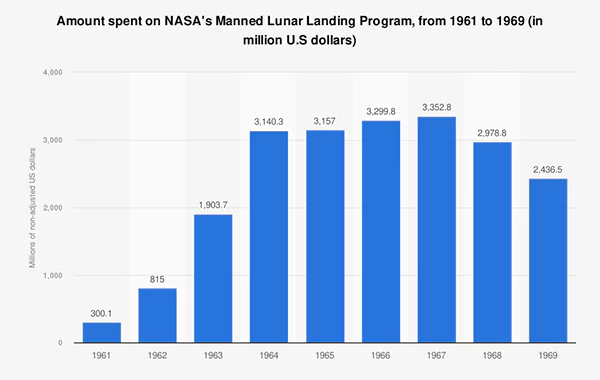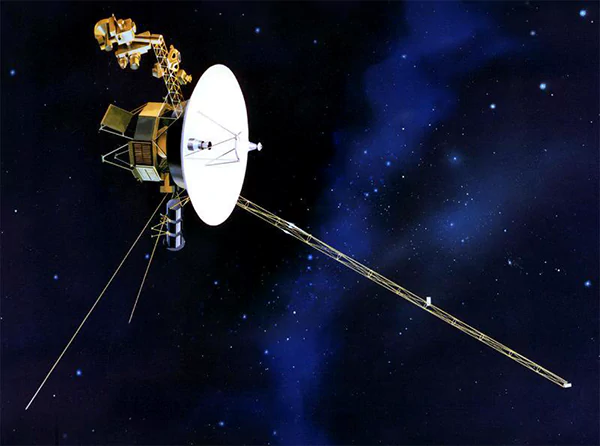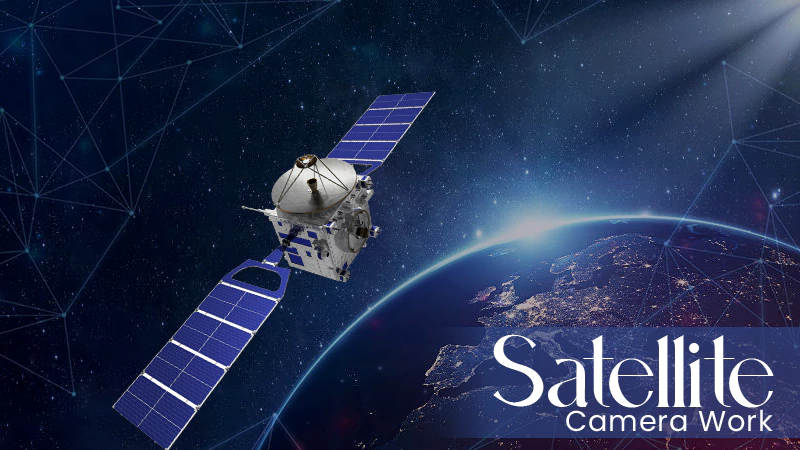
Humanity is about to enter a new stage of space exploration, and our return to the Moon and the subsequent flights to Mars already seems a matter of time. But have you ever wondered what is the farthest humanity has ever gotten?
So far, no probe has gotten further than the Voyager 1 spacecraft, a veteran probe set out on its mission in 1977. It has been roaming deep space for almost 50 years, but soon enough, we may lose contact with the traveler for good.
It will happen not just because of its enormous distance from Earth but also because the Voyager 1 power source is gradually diminishing. So, let’s find out where is Voyager 1 now and what it has accomplished for us so far.
Voyager 1 Mission Recap
The first fun fact about the Voyager 1 launch is that it happened on September 5, 1977 – over two weeks after Voyager 2. Why the reverse enumeration, then?
Probes were launched onto different trajectories, and the numerical logic was based on which roamer would reach its primary destination first, and the first probe was sent onto a faster and shorter route.
The spacecraft did cope with its goals in a year and a half, reaching Jupiter in January 1979 and sending the first useful photos of the planet and its natural satellites. Two of which, The Be and Metis, were discovered for the first time.
The second stop was Saturn, which NASA’s traveler reached in November 1980. Three more Saturn satellites Pandora, Prometheus, and Atla were discovered the next year.
Impressive as it is, that happened over forty years ago — so are there any new developments?

Interesting Fact
Here you can see the amount spent on NASA’s Manned Lunar Landing Program, from 1961 to 1969 (in million U.S. dollars)
Where is Voyager 1 now?
Voyager 1 speed at launch was 17 km/s, which is why the probe could reach its destination so quickly. Today, NASA can only approximately estimate the probe’s location in the constellation Ophiuchus, around 24.2 billion km away from our planet.
Hubble Telescope offers an approximate location map of this spacecraft and estimates on its further route, but considering the enormous Voyager 1 distance from Earth, this data is not entirely accurate.
On the other hand, it is as accurate as we may hope, considering how far it has ventured. So, a more pressing question is, does it still work?
The spacecraft is travelling at 38,000 mph in space which is almost 17 km per second. It is constantly working to provide valuable insights about the universe like interstellar medium and cosmic radiation.
Although it is the farthest spacecraft from Earth, it is still in connection with scientists and sending necessary data. Voyager 1 is enriching space exploration by continuously transmitting data about deep space. It will surely inspire future generations to push the boundaries of space exploration.
Does Voyager 1 Keep Transmitting?

Voyager 1 is almost 14.5 billion miles away from Earth but still operational and doing research work. But this distance will gradually end up breaking the connection of spacecraft with scientists.
Even though this spacecraft’s location is so far from Earth its gradually diminishing power supply cannot ensure uninterrupted communication.
Even after making its most vital discoveries, the probe still transmits data to NASA scientists, even though not as often as before.
In 1990, for example, it transmitted one of the most famous photographs of our planet from deep space, called A Pale Blue Dot. The same year, the probe also provided pictures of all planets in the system, ironically referred to as its family portrait.
In 1998, it became the farthest-traveling artificial object to be launched into space. At the time, NASA reported that it traveled over 10 billion km from Earth. That should already answer the question, is Voyager 1 the farthest spacecraft?
Yes, and it will probably remain so for a long time. The spacecraft is so far away that many mistakenly believe it will soon leave the limits of the solar system.
Orbital Today specifically states that this would not happen for another 30,000 years. However, the probe has already reached interstellar space — an event that most likely confused the media.
DO YOU KNOW?
The first artificial satellite Sputnik 1 was launched by the Soviets, one year before the establishment of NASA.
Does the Probe Respond to Earth Commands?
If the probe is still transmitting data, does it mean that it can still respond to commands from the ground station? Yes, but only to a certain degree. There is no question of bringing it back home, for example, that was never the intention in the first place.
However, NASA did have to make a few adjustments to the probe over the years. In 1982, for example, the engine operations had to be corrected to ensure this spacecraft could one day leave the solar system.
In 2005, seven years before entering interstellar space, the TEC encountered a shock wave resulting from the collision of solar and interstellar wind. The incident affected one of the spacecraft’s onboard computers, and since then, its data has become indecipherable to terrestrial computers.
In 2017, NASA had to adjust the probe thrusters again to prolong its life span and extend its course. And just recently, in 2022, NASA started to receive abnormal signals from the probe’s onboard computers.
As the scientists explained later, this happened because an antenna pointing to Earth had switched to a damaged computer.
So, when will this spacecraft die? Right now, no one can say exactly because two of the three onboard computers are still functional, and the tech has already exceeded all lifespan expectations.
Besides, NASA says that the power supply should suffice until 2025 at least. But even after that, Voyager will keep floating in interstellar space until it finally drifts further away.







